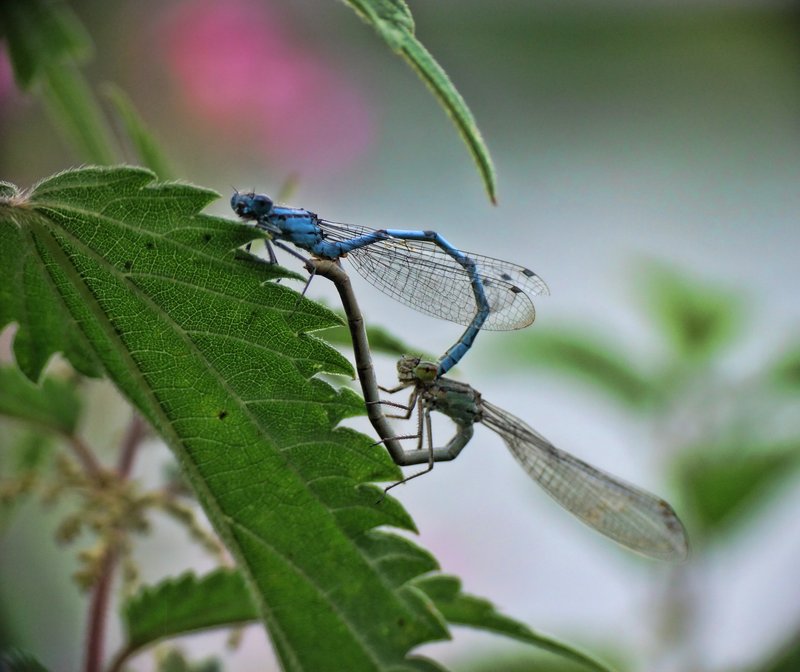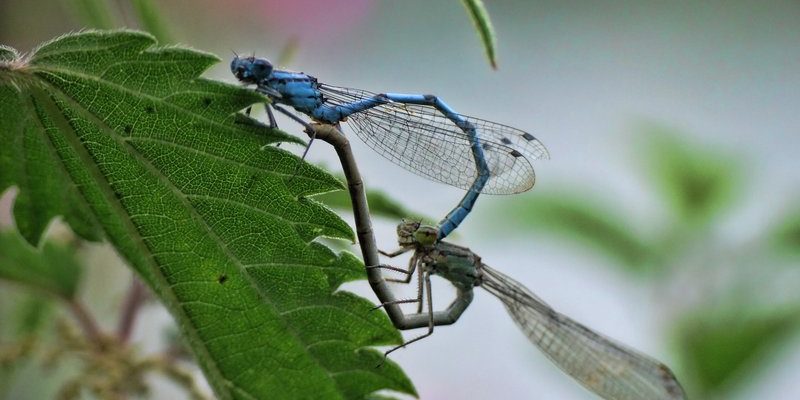
Imagine a bustling marketplace, filled with hawkers and shoppers. It’s lively, but danger is always around the corner, whether it’s a stray dog or a sudden downpour. The life of a dragonfly is much the same, filled with beauty but shadowed by potential threats. In this article, we’ll dive into the various predators and dangers that dragonflies face, exploring how their biology and behaviors help them navigate these challenges.
The Natural Predators of Dragonflies
Dragonflies aren’t at the top of the food chain for nothing. Yet, they still have to dodge a variety of predators. Birds, amphibians, and even other insects see dragonflies as tasty snacks.
Birds: The Aerial Hunters
Birds are probably the most notorious predators of dragonflies. Species like swallows, kingfishers, and even herons actively hunt these insects while flying. With their sharp eyesight, these feathered hunters can spot a dragonfly mid-flight, swooping down with incredible speed.
You might be wondering how dragonflies escape these predators. Well, they have some tricks up their sleeves! Their incredible speed and agility allow them to make sharp turns and rapid dives. They can change direction almost instantly, making them tough targets for any hungry bird.
Amphibians: The Sneaky Ambush Predators
While many people think birds are the main threat, frogs and toads, lurking near water bodies, pose a significant danger as well. When dragonflies come to the water’s edge, they risk becoming a meal for these ambush predators.
Frogs are particularly good at this. They sit quietly, waiting for the perfect moment to snap their long tongues out at an unsuspecting dragonfly. This makes it crucial for dragonflies to be aware of their surroundings and choose safe spots to land.
Other Insects: The Intruders
Believe it or not, other insects can also be threats to dragonflies. Larger insects, like some species of wasps, sometimes prey on dragonflies, especially when they are in their larval stage. These predatory insects may not be as fast or flashy as birds, but they still pose a significant threat.
In addition, dragonflies can fall victim to cannibalism. That’s right! Bigger dragonflies may not hesitate to munch on their smaller relatives. It’s a harsh world out there, and survival often comes down to who’s bigger and faster.
Environmental Threats to Dragonflies
While predators are a constant danger, dragonflies also face significant threats from their environment. Changes in habitat and climate can have dire effects on their populations.
Habitat Loss: The Impact of Urbanization
As cities expand and develop, natural habitats are destroyed. Wetlands, ponds, and streams—places where dragonflies thrive—are often drained or polluted. This loss of habitat can severely limit their breeding grounds and food sources.
Imagine living in a community that’s slowly being taken over by construction. Your favorite park is turned into a shopping mall, and suddenly, the beautiful trees and flowers are gone. This is essentially what’s happening to dragonflies when their habitats disappear.
Water Pollution: The Silent Killer
Another major threat is water pollution. Chemicals from agricultural runoff or waste can contaminate the water bodies where dragonflies lay their eggs. This pollution can lead to reduced survival rates for larvae and other aquatic life, which is vital for the dragonfly life cycle.
Picture a beautiful, clear pond filled with the sounds of nature. Now imagine that same pond becoming murky and filled with chemicals. It’s not just bad for the dragonflies; it affects the entire ecosystem.
Climate Change: A Growing Concern
Climate change presents yet another challenge. With rising temperatures and erratic weather patterns, dragonflies may struggle to find the right conditions for reproduction. Changes in temperature can also affect the availability of their food sources, like smaller insects.
When seasons shift or weather becomes less predictable, it’s like trying to dance on shifting sand. Dragonflies must constantly adapt to survive, but they aren’t always successful.
Competition with Other Species
Dragonflies are not alone when it comes to hunting for food. They share their habitats with many other insects, and sometimes, competition for resources can be fierce.
The Race for Food
As predators, dragonflies primarily feed on other flying insects, such as mosquitoes and flies. But they aren’t the only ones on the hunt. Other insects, like damselflies and larger spiders, also prey on the same food sources.
This competition can become intense, especially in areas where food is scarce. Imagine going to your favorite restaurant only to find that everyone else is ordering the same dish you love. Not every dragonfly gets to eat their fill every day, leading to more pressure in their already challenging lives.
Invasive Species: A New Threat
Invasive species can also disrupt the balance of ecosystems where dragonflies live. When non-native species are introduced, they can compete for resources or even prey on dragonflies and their larvae. For example, certain fish introduced into ponds and lakes might feed on dragonfly larvae, further reducing their population.
Think of it like inviting a new family member into your home who takes all the food and space. It can easily upset the delicate balance of who eats what and where.
Adaptations and Survival Strategies of Dragonflies
Despite all these threats, dragonflies are remarkable creatures with several adaptations that help them survive.
Aerodynamic Bodies for Speed
One of the key features of dragonflies is their aerodynamic bodies. Their long, slender shapes allow them to zip through the air quickly, making it harder for predators to catch them.
They can fly forward, backward, and even hover in place—like tiny helicopters on the hunt. This agility is vital, especially when dodging curious birds or swooping frogs.
Camouflage and Coloration
Many dragonflies also utilize camouflage as a survival technique. Their colors often blend well with their surroundings, helping them avoid detection.
For instance, a dragonfly resting on the leaves of a plant may be hard to spot due to its similar hues. This natural disguise gives them an edge when a predator is nearby.
Effective Breeding Strategies
Dragonflies are also smart about finding the right spots to reproduce. They prefer clean, undisturbed waters for laying their eggs, which boosts the survival chances of their offspring. By choosing safe habitats, they improve the likelihood that their eggs will develop into healthy larvae before taking to the skies as adults.
Conservation Efforts for Dragonflies
Recognizing the challenges dragonflies face, various conservation efforts aim to protect their habitats and ensure their survival.
Wetland Restoration Projects
Restoring wetlands and natural habitats is critical for dragonfly populations. Organizations work to establish new wetland areas, creating safe spaces for these insects to breed and thrive.
These projects not only benefit dragonflies but also help a variety of other wildlife. It’s like throwing a big party where everyone gets to enjoy the treats!
Community Awareness and Education
Raising awareness about the importance of dragonflies and their ecosystems can also make a difference. Community programs can teach people how simple actions, like reducing pesticide use and conserving water, can help protect dragonflies.
Imagine a neighborhood coming together to clean up a local pond. Not only do dragonflies benefit, but the entire community gets to enjoy healthier, cleaner environments.
Dragonflies are fascinating creatures, but they face many predators and environmental threats that challenge their survival. From the birds that hunt them to habitat loss caused by urban development, these insects must navigate a complex world to thrive. Their ability to adapt, coupled with conservation efforts, provides hope for their future.
By understanding the pressures they face, we can contribute to their protection. Whether it’s supporting local conservation projects or learning more about their ecosystems, every bit helps these incredible insects continue to dance through our skies. So, the next time you spot a dragonfly, take a moment to appreciate not just its beauty, but the incredible journey it has taken to survive.

